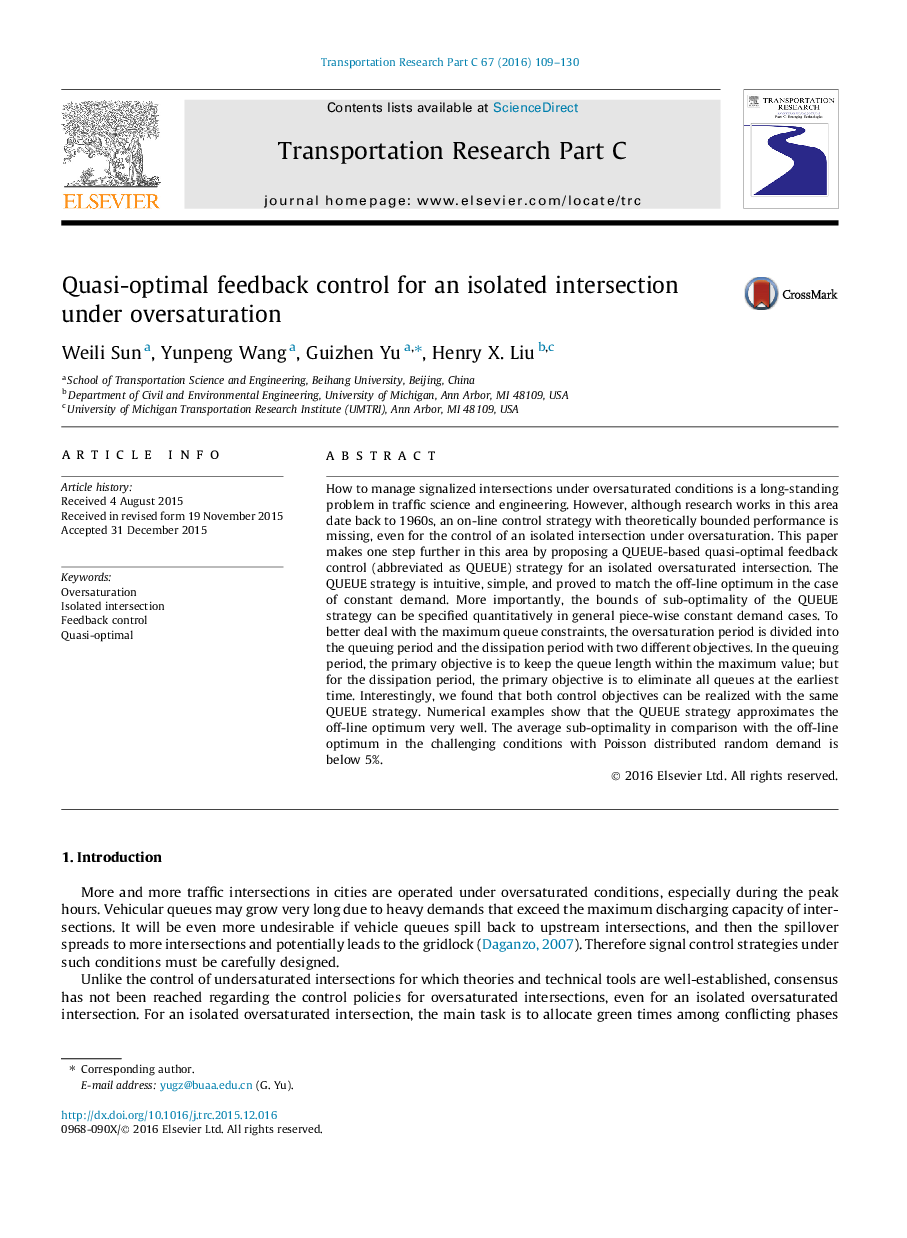| Article ID | Journal | Published Year | Pages | File Type |
|---|---|---|---|---|
| 6936394 | Transportation Research Part C: Emerging Technologies | 2016 | 22 Pages |
Abstract
How to manage signalized intersections under oversaturated conditions is a long-standing problem in traffic science and engineering. However, although research works in this area date back to 1960s, an on-line control strategy with theoretically bounded performance is missing, even for the control of an isolated intersection under oversaturation. This paper makes one step further in this area by proposing a QUEUE-based quasi-optimal feedback control (abbreviated as QUEUE) strategy for an isolated oversaturated intersection. The QUEUE strategy is intuitive, simple, and proved to match the off-line optimum in the case of constant demand. More importantly, the bounds of sub-optimality of the QUEUE strategy can be specified quantitatively in general piece-wise constant demand cases. To better deal with the maximum queue constraints, the oversaturation period is divided into the queuing period and the dissipation period with two different objectives. In the queuing period, the primary objective is to keep the queue length within the maximum value; but for the dissipation period, the primary objective is to eliminate all queues at the earliest time. Interestingly, we found that both control objectives can be realized with the same QUEUE strategy. Numerical examples show that the QUEUE strategy approximates the off-line optimum very well. The average sub-optimality in comparison with the off-line optimum in the challenging conditions with Poisson distributed random demand is below 5%.
Related Topics
Physical Sciences and Engineering
Computer Science
Computer Science Applications
Authors
Weili Sun, Yunpeng Wang, Guizhen Yu, Henry X. Liu,
